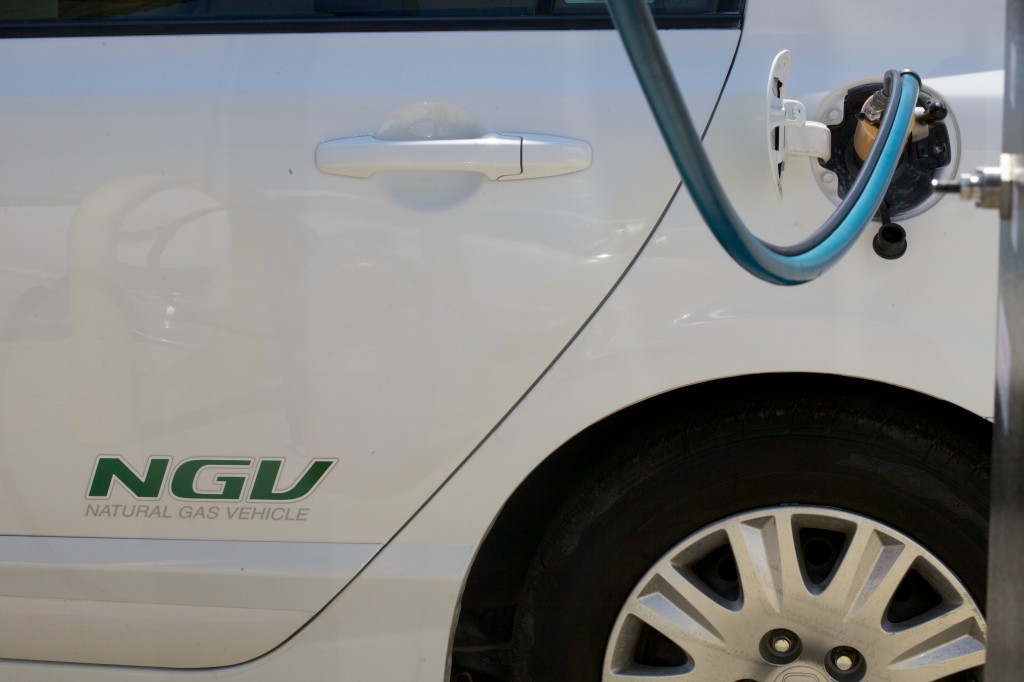
Natural gas accounts for around a quarter of the energy used in the United States. A third of it is used at home for cooking and heating, one-third to industrial uses, and another third to electric power production. It is clean-burning, but only 1/10 of 1% is used as transportation fuel. Over 94% of U.S. natural gas is domestically produced.
There are two forms of natural gas that are used in vehicles: compressed natural gas (CNG) and liquid natural gas (LNG). Both options are clean-burning and relatively low priced.
CNG is odorless, colorless, and tasteless. It is stored on board a vehicle in high-pressure cylinders. A vehicle that runs on CNG can reduce smog-forming emissions by 70 percent and have 20 percent fewer greenhouse gas emissions than a gasoline-powered vehicle. CNG can be used by light-, medium-, and heavy-duty vehicles.
LNG is created by purifying natural gas and super cooling it to -260 degrees Fahrenheit to become a liquid. LNG is stored in double-walled vacuum-insulated pressure vessels. LNG is usually used in medium- and heavy-duty vehicles.
![]() Look for natural gas providers in San Diego.
Look for natural gas providers in San Diego.
- Alternative Fuels Data Center – Natural Gas Fueling Station Locator
- Southern California Gas Company Public CNG Locator
Links for more information about natural gas:
- Alternative Fuels Data Center – U.S. Department of Energy site with information on natural gas (CNG/LNG) as an alternative fuel
- California Natural Gas Vehicle Coalition
- California Natural Gas Vehicle Partnership
- California Natural Gas Producers Association
- California Energy Commission: Natural Gas Data and Statistics
- Clean Energy Fuels – Info on natural gas vehicles from the nation’s largest supplier of natural gas vehicle fuels
- Creative Bus Sales – Info on CARB certified CNG buses
- Cost-Saving Calculator – Diesel v. CNG
